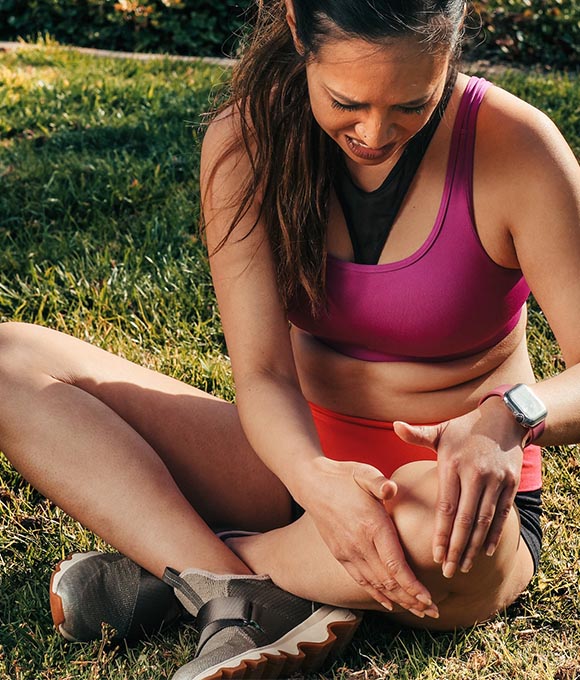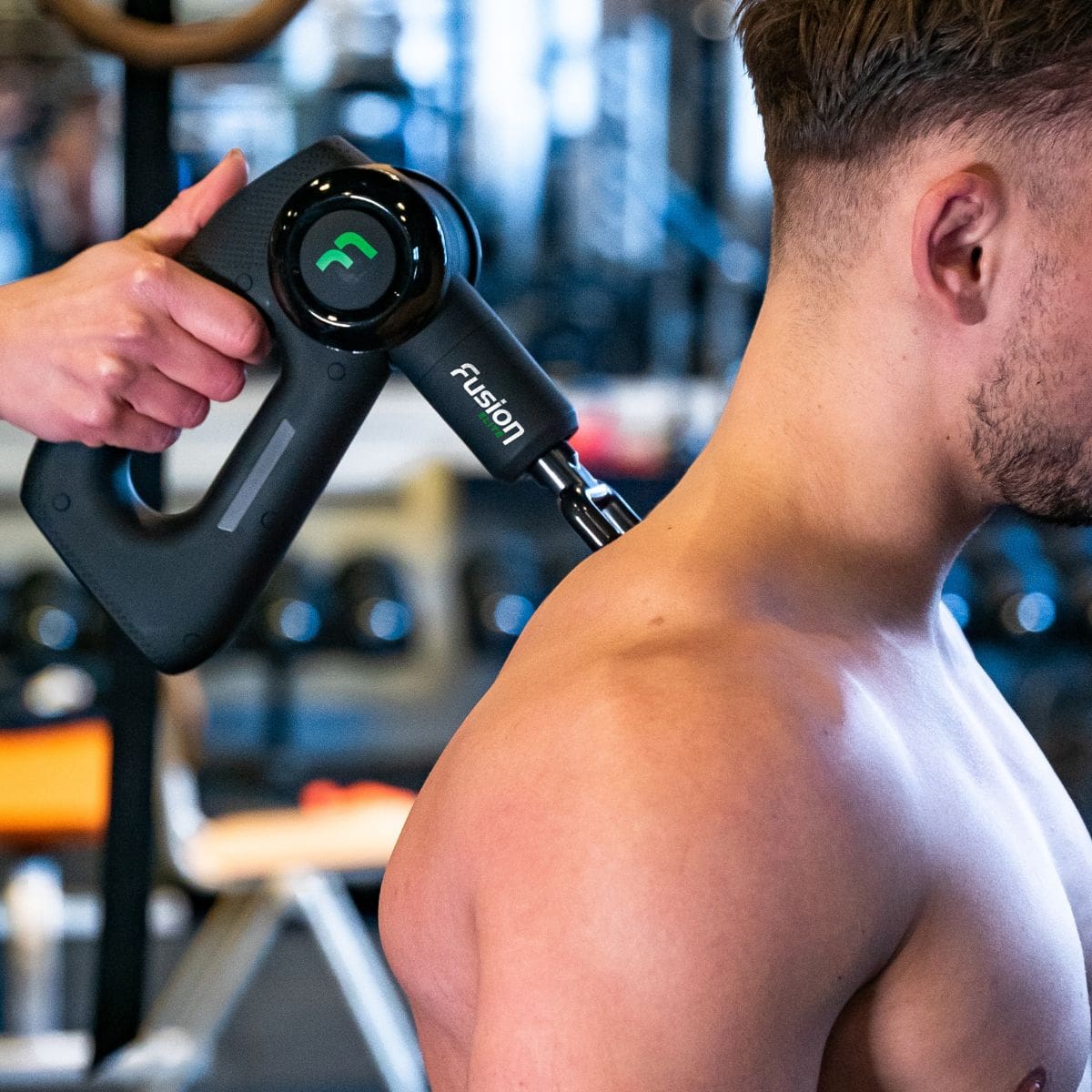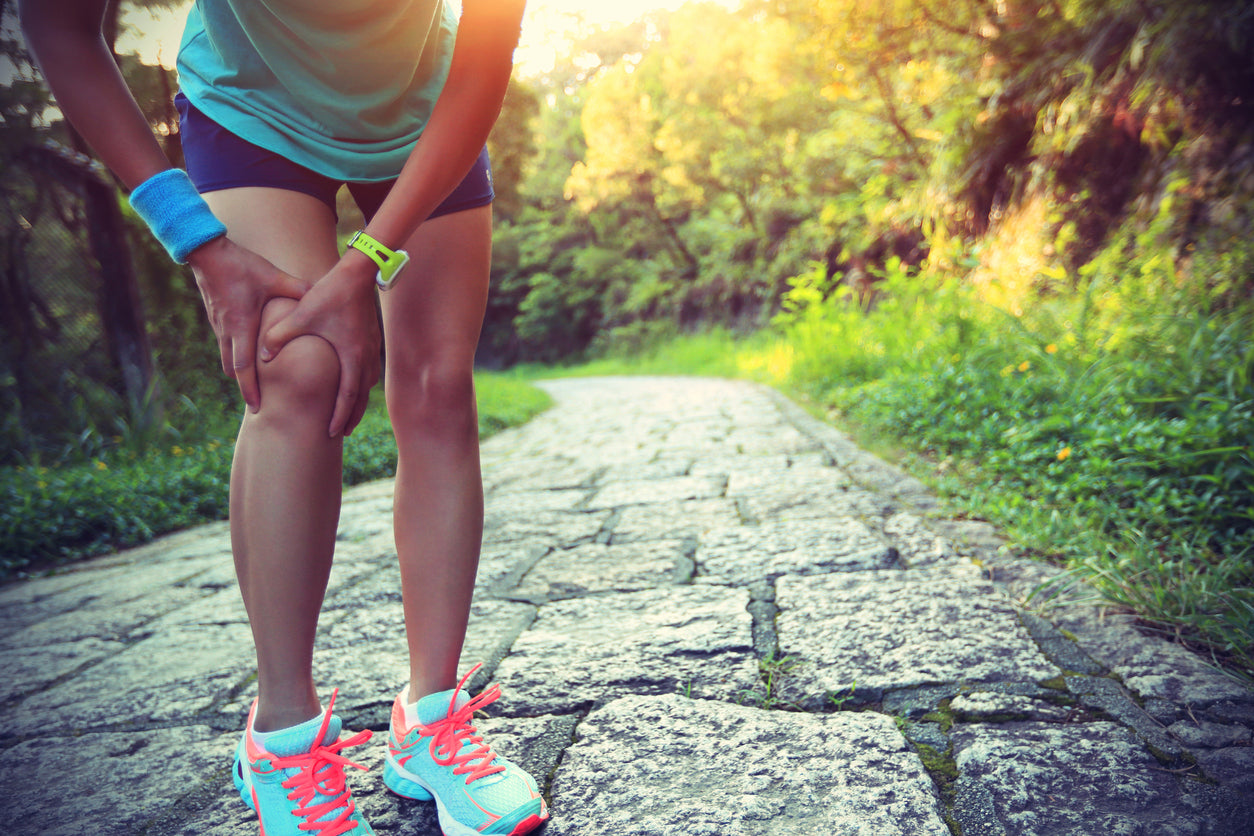Are you dealing with shin splints and wondering if using a massage gun can help?
If yes, then you've come to the right place.
Shin splints are a common injury that can cause pain and discomfort in the lower leg. These injuries can be caused by overuse, improper running form, or inadequate stretching.
If you are suffering from a shin splint, then you know how painful and limiting it can be. People with this condition often experience pain when running, walking, or standing.
While there are many treatments for shin splints, percussive massage guns have become increasingly popular in recent years. These handheld devices help relieve shin splint pain and discomfort by delivering rapid pressure pulses to the affected area.
With massage guns, treating shin splints has never been easier. Instead of a massage therapist, patients can invest in a massage gun to target the affected area.
But what steps should you take when using a massage gun for shin splints?
In this article, we'll discuss the best practices for using a massage gun to treat shin splints. You'll also learn which massage head attachments are best for targeting the affected area and how to use them.
Let's roll!
Understanding Shin Splints
Getting relief from shin splints all starts with understanding what this condition is and how it can be treated. Let's take a look at the basics.
Overview of shin splints

As we've discussed before now, shin splints are a common injury that can cause pain and discomfort in the lower leg.
They are characterized by pain and discomfort in the shin area, often when running, walking, or standing. Experiencing shin splints pain can range from mild to severe and can be difficult to manage without proper treatment.
When it comes to treating this condition, knowing the cause of the injury is essential. Next, we'll go over the causes of shin splints for a better understanding of how to treat them.
Causes of shin splints
Shin splints can be caused by a variety of factors, including overuse, improper running form, and inadequate stretching. Let's look at each of these causes in more detail.
Wearing the wrong type of shoes for your activity
Wearing the wrong shoes for your activity is one of the most common causes of shin splints.
Shoes that are too tight or too loose can put extra strain on your lower leg muscles, leading to pain and discomfort. Additionally, shoes that lack cushioning or support can contribute to shin splints.
When it comes to preventing shin splints, wearing the right type of shoes for your activity is essential.
Improper running form
Another common cause of shin splints is improper running form.
If you are a runner, it's essential to make sure you use the correct technique when running. This includes keeping your feet pointed forward and avoiding over-striding.
What's more, it's essential to ensure you are not leaning too far forward or backward when running.
Sudden changes in intensity or duration of exercise
Sudden changes in intensity or exercise duration can also lead to shin splints.
If you are an avid runner, it's important to gradually increase the intensity and duration of your runs. Making sudden changes in your running routine can strain your lower leg muscles, leading to pain and discomfort.
Weak muscles
Weak muscles can also be a contributing factor to shin splints.
If the muscles in your lower legs are weak, they may not be able to support the extra strain that comes with running or other activities. Weak muscles may occur due to not stretching or strengthening the deep muscles in your lower legs.
Understanding the causes of shin splints is essential for proper treatment. Now, let's take a look at just how you can tell if you have shin splints.
Symptoms of shin splints
Symptoms of shin splints can vary from person to person. However, some of the most common symptoms include:
Pain and tenderness in the lower legs, especially when running or walking
One of the most common symptoms of shin splints is pain and tenderness in the lower legs, especially when running or walking.
This pain can range from mild to severe and may be accompanied by swelling or redness in the affected area. If you experience pain in your lower legs when running or walking, it may be a sign of shin splints.
Pain that worsens with activity
Another common symptom of shin splints is pain that worsens with activity.
If you experience an increase in pain when running or walking, it could be a sign of shin splints. This type of pain usually subsides after resting for a few minutes.
A dull ache in the shin area
If you experience a dull ache in the shin area, it could be a sign of shin splints.
This type of pain is usually constant and can range from mild to severe. Most times, the pain will worsen with activity and subside after resting.
Muscle tightness
Muscle tightness is another common symptom of shin splints.
This can cause pain and discomfort in the affected area, as well as a decrease in range of motion. With muscle tightness, it's important to stretch the affected area regularly to help reduce pain and discomfort.
So these are some of the common symptoms of shin splints. If you experience any of these symptoms, it's important to take steps to prevent and treat the condition.
One way you can do this is by using a massage gun.
As we've discussed, massage guns offer a number of benefits for those suffering from shin splints. Let's look at how these powerful tools can help.
Treating Shin Splints with a Massage Gun
Relieving pain from shin splints can be a long and difficult process.
However, using a massage gun can help aid the proper recovery process. Let's explore how these massage tools work and how they can help to treat shin splints.
How a massage gun helps relieve shin splints

How does a device that looks like a power drill help to treat shin splints?
What special features does it come with? Well, it all starts with percussion therapy.
Percussion therapy is a type of massage therapy that uses rapid pulses of pressure to penetrate deep into the muscle tissue for a more effective massage.
This therapy helps to relax tight calf muscles, reduce inflammation, and improve blood circulation in your shin area.
Massage guns provide percussive therapy with adjustable intensity levels, allowing you to customize your massage experience. Popular deep-tissue massage guns brands like the Fusion Elite and Fusion Mini massage gun come with a range of attachments that can target specific areas of your body.
These attachments are designed to provide targeted relief for shin splints, allowing you to focus on your shin and reduce pain and discomfort.
Let's look at the benefits of using these devices for shin splints.
Benefits of using a massage gun on shin splints
Using a massage gun on your shin splints provides several benefits that can help speed up recovery times. Some of them include the following:
Increased blood flow to the area, which helps to reduce inflammation and pain
One of the most important benefits of using a massage gun on your shin splints is increased blood flow to the area.
When you place the massage gun on your shin, the rapid pulses of pressure help to stimulate blood flow to the area. More blood flow means more oxygen and nutrients to the area, which helps to reduce inflammation and pain.
Relaxation of tight muscles in the shin area, which can help to reduce discomfort
Another benefit of using a massage gun on your shin splints is that it helps relieve muscle spasms.
Shin splints come from overworked muscles, so it's important to relax them to reduce discomfort. With massage guns, you can target specific areas of your shin and relax the tight muscles, which can help to reduce pain and discomfort.
Percussion therapy makes this process easier and more effective helping to loosen up tight muscles and reduce pain.
Improved range of motion in the lower leg muscles, which can help to prevent future injuries
If you're experiencing shin splints, your lower leg muscles are likely tight and stiff.
Using a massage gun can help to improve the range of motion in these muscles, which can help to prevent future injuries. When you use a massage gun on your shin, the rapid pulses of pressure help to loosen up tight, deeper muscles and improve flexibility.
This improved flexibility can help reduce the risk of future injuries and keep your shin splints from returning.
Reduced risk of further injury due to improved muscle strength and flexibility
Remember when we talked about how having weak muscles can lead to shin splints?
Using a massage gun on your shin can help improve muscle strength and flexibility, reducing the risk of further injury.
With improved strength and flexibility, your leg muscles will be better able to handle the repetitive stress of physical activities, reducing the risk of future shin splints.
Overall, using a massage gun on your shin splints can provide several benefits that can help speed up your recovery process and reduce the risk of further injury. Let's look at just how you can use a massage gun on shin splints.
How To Use a Massage Guns on Shin Splints
Reaping the benefits of using a massage gun on your shin splints requires proper technique. Here are some tips to help you get started:
1. Choose the right massage head
The first step in using a massage gun on your shin splints is to choose the proper massage head attachment.
Most massage guns come with a variety of attachments that are designed for different areas of the body. You'll want to use a flat head or round head attachment for shin splints. Flat-head attachments are great for targeting specific areas, while round-head attachments are better for larger areas.
With the proper attachment, you'll be able to target the specific areas of your shin causing discomfort.

2. Place the massage gun on your shin and move it in a circular motion
Once you've chosen the right massage head, it's time to place the massage gun on your shin.
Start by placing the massage gun at a 45-degree angle to your shin and slowly move it up and down in a circular motion. You should also keep the pressure light, as too much pressure can cause further injury or discomfort.
3. Increase the intensity of the massage gradually
As you move the massage gun up and down your shin, you can gradually increase the pressure to help loosen up tight core muscles.
However, be sure to keep the pressure light at first and only increase it as needed. You should also avoid any areas that are particularly tender or painful.

4. Spend extra time on any particularly tight spots or muscle knots that you may find
When using a massage gun on your shin splints, you must spend extra time on any particularly tight spots or muscle knots that you may find.
These areas are likely to be the source of your shin pain and discomfort, so it's important to target them with extra attention. You can use a slower, more focused massage technique to target these areas.
5. Finish with a cool-down period
Once you've finished using the massage gun on your shin splints, it's essential to end with a cool-down period.
This period is vital for allowing your sore muscles to relax and recover after a massage session. During this time, you can use a cold compress or ice pack to help reduce any inflammation or soreness.
Following these tips, you can use a massage gun on your shin splints to help reduce leg pain and improve flexibility. With regular use, you should start to see an improvement in your symptoms over time.
Let's look at safety precautions to keep in mind when using a massage gun on your shin splints.
Safety Precautions When Using a Massage Gun on Shin Splints
When using a massage gun on your shin splints, it's important to take certain precautions to ensure that you don't cause further injury or discomfort.
Here are some tips to keep in mind:
Don't apply too much pressure
Another important precaution is to not apply too much pressure when using the massage gun.
It's important to keep the pressure light and only increase it as needed. Applying too much pressure can cause further injury or discomfort.
Stop using the massage gun if you experience any chronic pain
When using a massage gun on your shin splints, it's important to stop using the massage gun if you experience any discomfort.
Pain indicates that you are applying too much pressure or that the area is too tender for the massage gun.
Avoid using the massage gun on any open wounds or areas of skin that are particularly tender
When using a massage gun on your shin splints, it's important to avoid using it on any open wounds or particularly tender skin areas.
Applying pressure to these areas can cause further injury and discomfort. If you have any cuts, scrapes, or bruises in the area, it's best to avoid massaging them with the massage gun. Additionally, if you experience any numbness or tingling in the area, it's best to stop using the massage gun.
Frequently Asked Questions
Can't wait to get started using a massage gun on your shin splints?
We can't wait for you to get started either! But first, look at some commonly asked questions to help you get the most out of your massage gun.
How often should I use a massage gun for shin splints?
The frequency of massage gun use on shin splints will depend on the severity of your condition.
If you are dealing with mild discomfort, using a massage gun once or twice a week should be sufficient. However, if you are dealing with more severe pain and inflammation, it may be beneficial to use the massage gun more frequently.
It is important to listen to your body and adjust the frequency as needed. A massage gun can effectively reduce pain and improve flexibility.
What happens if I ignore treating shin splints with a massage gun?
If you ignore treating shin splints with massage guns, the pain and inflammation can worsen over time.
This can lead to further injury and discomfort, as well as decreased mobility and flexibility. Additionally, ignoring treatment can cause the condition to become chronic, leading to long-term complications such as muscle weakness and instability.
It is important to seek medical advice if your shin splints are not improving with massage gun use.
What should I look for when buying a massage gun for shin splints?
When choosing a massage gun for shin splints, it is vital to look for one with adjustable intensity and speed settings.
This will allow you to customize the massage to your specific needs and ensure that you are not applying too much pressure or causing further injury or discomfort. Additionally, look for a massage gun with a long battery life so you can use it for extended periods without recharge.
You can also look for massage guns without noise, which can be beneficial if you use the massage gun in a shared space.
What areas should I focus on when using a massage gun for shin splints?
When using a massage gun for shin splints, it is important to focus on the areas of the lower leg that are affected by the condition. This includes the calf muscles, Achilles tendon, and shin bone.
It is also beneficial to use the massage gun along the length of the muscle fibers, as this can help to reduce tension and improve flexibility. Additionally, you can focus on any knots or trigger points in the area to help reduce pain and inflammation.
Can I perform exercise while treating shin splints with a massage gun?
You can exercise while treating shin splints with a massage gun.
However, it is important to note that the massage gun should be used before and after any physical activity. This will help reduce inflammation and soreness in the area and improve flexibility and range of motion.
Common exercises people with shin splints can do include walking, jogging, and stretching. Just be sure to listen to your body and take breaks as needed.
Are there other forms of treatment I can combine with massage guns for shin splints?
Yes, other forms of treatment can be combined with massage guns for shin splints.
These include stretching, icing, and rest. Stretching helps to improve flexibility and range of motion in the affected area, while icing helps to reduce inflammation and pain. Rest is also important as it allows the body time to heal and recover from any physical activity or injury.
Conclusion
Whether you are dealing with mild or severe shin splints, using a massage gun can effectively reduce pain and improve flexibility.
However, it is crucial you use the massage gun with caution and avoid using it on open wounds or particularly tender skin areas. Additionally, combining massage gun treatment with other forms of treatment such as stretching, icing, and rest, is beneficial.
By following these tips, you can ensure that you get the most out of your massage gun and experience relief from shin splints. We hope this article has helped provide you with the information you need to get started using a massage gun on your shin splints.
Let us know if you have any further questions!




